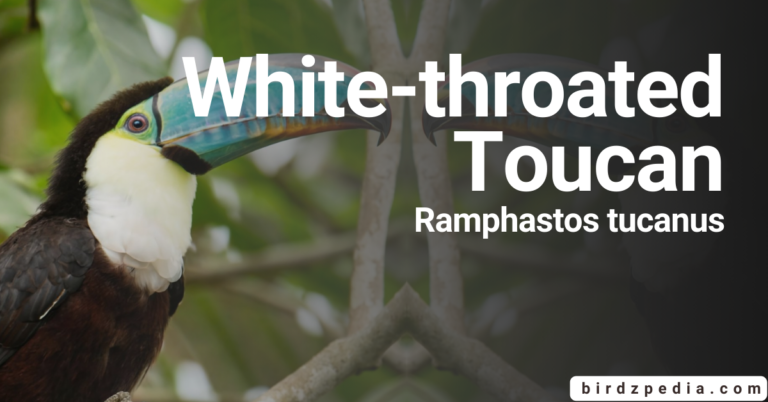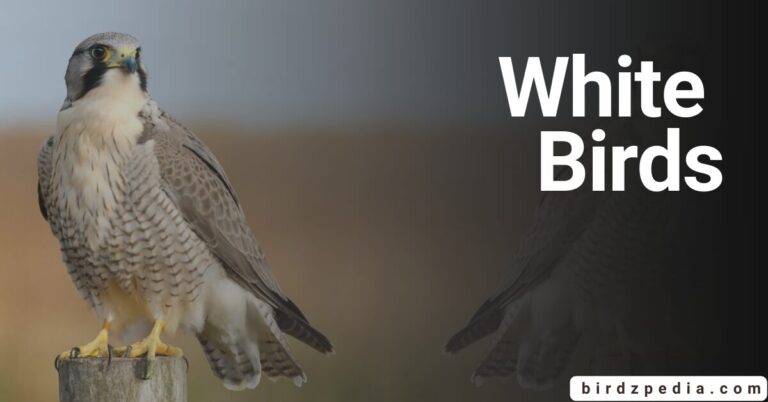Into the Realm of the Double-crested cormorant
Scientific Classification
| Kingdom | Phylum | Subphylum | Class | Order | Family | Genus | Species |
|---|---|---|---|---|---|---|---|
| Animalia | Chordata | Vertebrata | Aves | Suliformes | Phalacrocoracidae | Nannopterum | auritus |
Double-crested cormorant
The water bird family Cormorant includes the Double-crested Cormorant (Nannopterum auritum). It is extensively distributed throughout North America, often found near rivers, lakes, and coastal areas, ranging from Florida and Mexico to the Aleutian Islands in Alaska. Its general black plumage, which is
between 70 and 90 cm (28 and 35 in) in length, is enhanced by an orange-yellow face patch and extra breeding-season plumage that displays a unique double crest with mingled black and white feathers. This bird, of which there are five identified subspecies, is primarily a fish-eater and hunts by swimming
and diving. They diligently dries its feathers after aquatic activities, despite the fact that they are not waterproof. This species’ population, which was once seriously threatened by DDT use, has greatly increased in recent years.

Summary
- Species Name: Nannopterum auritum
- Family: Phalacrocoracidae
- Distribution: widespread throughout North America, ranging from Florida and Mexico to the Aleutian Islands in Alaska.
- Size: Measures 70–90 cm (28–35 in) in length.
- Appearance: Mostly black with a patch of orange-yellow on its face; during breeding season, grows a twin crest.
- Subspecies: Recognized into five distinct subspecies.
- Habitat: Prefers rivers, lakes, and coastal areas.
- Feeding Habits: mostly eats fish; uses diving and swimming as hunting techniques.
- Feathers: Not waterproof; needs to be dried after using water.
- Conservation: DDT once put the population in danger, but in recent years, it has greatly recovered.
Taxonomy
They was first noted by René Primevère Lesson in 1831. Formerly placed in the genus Phalacrocorax, a 2014 study recommended that it and many other species of American cormorants be reclassified to the genus Nannopterum. This updated classification was approved by the
International Ornithological Congress (IOC) in 2021, taking into account the growing body of knowledge regarding avian taxonomy. The scientific name for their is derived from the Greek words vᾶνος (nános), which means “small,” and πτερόν (pterón), which means “wing.” Named for
the flightless cormorant (N. harrisi) because of its unusually short wings, the genus name stuck even when it was discovered that the neotropic cormorant (N. brasilianum) and the Nannopterum auritum (N. harrisi) were related to each other. These species, which included the double-crested cormorant,
were reclassified into the genus Nannopterum despite having wings of standard size. Originating from the Latin word auritus, which means “eared,” the species’ name alludes to its nuptial crests. These unique nuptial crests are also referenced in the bird’s common name.

Subspecies
| Subspecies | Common Name | Distribution | Size and Physical Characteristics |
|---|---|---|---|
| N. a. albociliatum | Farallon Cormorant | Pacific coast of North America from British Columbia to Sinaloa, Mexico; inland areas around Salton Sea | Third largest amongNannopterum auritum subspecies; white to partially white crests |
| N. a. auritum | Nominate Cormorant | Great Basin, Rocky Mountains, central and eastern North America, Canadian prairies, Great Lakes | Moderately large; black nuptial crests |
| N. a. cincinnatum | White-crested Cormorant | Southern coast of Alaska, Aleutian Islands, west from Kodiak to Chuginidak | Largest subspecies; straight, white crests |
| N. a. floridanum | Florida Cormorant | Southern and central Texas, east to the Atlantic, North Carolina to Florida | Smallest among subspecies; dark nuptial crests |
| N. a. heuretum | Bahamian Cormorant | Breeds in mangroves of San Salvador, Bahamas; possibly resident on other Bahamian islands | Smallest; straight, white crests; bare lores; greenish gloss on head and neck |
Description
It is a large, powerful waterbird with a medium-sized hooked bill, a prolonged neck, a modest tail, and webbed feet. These cormorants are large birds, measuring between 70 and 90 cm (28 and 35 in) in length and 114 to 123 cm (45 to 48 in) in wingspan.
Males and females weigh between 1.2 and 2.5 kg (2.6 and 5.5 lb), and their morphological characteristics do not exhibit sexual dimorphism.
- Dark-colored plumage with yellow or orange bare supra-loreal and gular skin.
- Breeding adults are mostly black with dark grayish back and coverts; nuptial crests above eyes can be white, black, or a mix.
- Breeding adult’s face has orange bare skin; non-breeding adults lack crests and have yellowish skin around the face.
- Adult bill is dark-colored.
- Resembles the larger great cormorant but can be differentiated by more yellow on the throat and bill.
- Similar to the neotropic cormorant; both species can be found together in overlapping ranges.
- Juvenile plumage is dark gray or brownish; underparts lighter with a pale throat and breast darkening towards the belly.
- Juvenile bill is mostly orange or yellowish.

Distribution and Habitat
This bird, which is extremely common and widely dispersed, spends the winter in areas without ice on both coastlines, reaching as far north as southern New England (east coast) and southern Alaska (west coast). Its winter range extends to the Bahamas and Mexico in the south. It leaves the coldest areas of its
breeding range, which includes eastern Canada, to migrate. It does occasionally show up in Europe as a rare vagrant; sightings in places like Great Britain, Ireland, and the Azores have been reported.living inland to the Colorado River and along the Pacific Coast from the Aleutian Islands to Nayarit, Mexico
(with the exception of some areas of British Columbia and the Southern California Bight). Additionally, an inhabitant of southern New England, Florida, Cuba, the Yucatán Peninsula, Long Island, and the adjacent territories on the Atlantic coast. Breeding occurs from Utah to Alberta, east through the Great Lake states
to Nova Scotia, and south to northern Massachusetts, with breeding also occurring in areas of Alaska between Bristol and Kuskokwim Bays. North-central North America is the breeding region for this species. All US coastal plains, including the Atlantic and Gulf Coastal Plains south to Campeche,
as well as the Bahamas, Turks and Caicos, and Cayman Islands, are home to this bird during the nonbreeding season. On the Pacific Coast, its range encompasses all previously mentioned resident areas, along with British Columbia and the Southern California Bight.
Species in same Genus
| Genus | Species Common Name | Scientific Name |
|---|---|---|
| Nannopterum | Double-crested Cormorant | Nannopterum auritum |
| Nannopterum | Flightless Cormorant | Nannopterum harrisi |
| Nannopterum | Neotropic Cormorant | Nannopterum brasilianum |
| Nannopterum | Bahamian Cormorant | Nannopterum heuretum |

Behavior
They has a distinctive swimming technique where it glides along the water’s surface until its head and neck are completely visible, at which point it dives beneath the surface. It can dive for 30 to 70 seconds and reach depths of 1.5 to 7.5 meters (4 to 24 feet) using its feet as
propulsion. Because its feathers are not completely waterproof, the cormorant changes its behavior after diving, standing for extended periods of time with its wings outstretched to aid in drying. This species sometimes leaves colonies in long, single-file formations and flies at a low altitude above the water with its bill slightly inclined upward.
Diet
- Food sources include the sea, freshwater lakes, and rivers.
- Like all cormorants, the Double-crested dives underwater to locate its prey.
- Primary diet consists of fish, with occasional consumption of amphibians, crustaceans, and insects.
- Fishing is done by diving, with smaller fish sometimes consumed underwater, while larger prey is brought to the surface before consumption.
- Considered pests to aquaculturists due to their significant predation on fish ponds, resulting in substantial financial losses for farmers.
- Cormorants regurgitate pellets containing undigested parts of their meals, such as bones.
- Biologists can dissect these pellets to analyze the bird’s diet and identify consumed prey.

Breeding
They breeds beside inland rivers and lakes as well as along coastal areas. Sticks are used in the construction of the nests, which are built in trees, on cliff faces, or on the ground—especially on appropriate islands.
These cormorants are sociable birds; they usually form colonies with other water birds. The birds have a characteristic grunt call that is deep and guttural in these group circumstances.
Recovery
| Year | Event |
|---|---|
| 1960s | Nannopterum auritum population decline attributed to the adverse effects of DDT. Colonies occasionally persecuted in areas believed to compete with human fishing. |
| Recent | Population growth may be the result of fewer pollutants, particularly since DDT use has been phased out. In southern wintering grounds, aquaculture ponds might aid in survival and growth. |
| 1894 | “Birds of Ontario” by Thomas McIlwraith observes that juvenile cormorants congregate in big flocks in secluded locations until the ice-lid encloses their food source. They then return in the spring. |
| Great Lakes | The Great Lakes nesting populations benefit from the ideal feeding conditions that non-native alewife colonization brings, which increases breeding success. Because the U.S. Fish and Wildlife Service believes that cormorants are affecting sport-fish stocks, management measures have been implemented. |
| Control Measures | In response to public appeals, the U.S. Fish and Wildlife Service provides control alternatives, like as culling and reproductive measures, to certain government agencies. There is no designated hunting season. |
| May 2008 | On Middle Island in Lake Erie, the Canadian government drastically lowers cormorant nests in order to conserve flora and keep the ecosystem in balance. The veracity of the proposal comes under assault, with detractors pointing to inaccurate facts. The culling program will go through 2021. |

Speed
The Nannopterum auritum can fly at a usual speed of 37 to 47 miles per hour, or 60 to 75 kilometers per hour. These birds are renowned for their quick and accurate water flying.
Lifespan
In the wild, Nannopterum auritum usually live between six and ten years. However, a number of variables, including the environment, predators, and the availability of food, can affect how long they live.
Voice
They makes a range of noises with its vocalizations. They are recognized for their guttural, deep grunts, croaks, and calls. The distinct vocalizations have multiple functions, such as warning or alarm calls, courting displays, and communication within colonies.
Threats
- Persecution: Persecutors of Nannopterum auritum have resulted in negative attitudes and sporadic control actions, particularly in places where they are thought to compete with human fishing.
- DDT Contamination: Due to the harmful effects of DDT use on the population, there was a notable fall in numbers during the 1960s.
- Aquaculture Impact: Because of their heavy predation on fish ponds, which causes farmers to suffer significant financial losses, they are viewed as pests by aquaculturists.
- Sport-Fish Impact: believed to be a factor in the demise of some sport-fish populations, especially where native species are in competition with them in the Great Lakes region.
- Control Measures: Government organizations have responded to perceived threats by implementing control measures, including as culling and methods to impede reproduction, which have sparked discussions on the morality and effectiveness of such policies.

Common Names in Different Languages
| Language | Common Name Translation |
|---|---|
| Spanish | Cormorán de doble cresta |
| French | Cormoran à aigrettes doubles |
| German | Doppelhaubentölpel |
| Italian | Cormorano dalle doppie creste |
| Portuguese | Corvo-marinho-de-crista-dupla |
| Dutch | Dubbelkuif aalscholver |
| Russian | Двурогий баклан |
| Japanese | ニシアメリカウ (Nishi Amerika u) |
| Mandarin Chinese | 双冠鸬鹚 (Shuāng guān lúcí) |
| Hindi | डबल-क्रेस्टेड कॉर्मोरेंट (Ḍabala-krēṣṭēḍ kȧrmōrĕnṭa) |
| Arabic | كركوس ذو الغطاء المزدوج (Karkous dhu al-ghata’ al-mazduj) |
FAQs
- What is the Double-crested Cormorant’s habitat?
- A wide range of bodies of water are home to Nannopterum auritum, including rivers, lakes, and coastal regions.
- What do they eat?
- Fish makes up the majority of their food, although they also eat insects, crabs, and amphibians.
- Are they protected species?
- The Migratory Bird Treaty Act protects them in the United States, although perceived threats to fisheries may lead to control measures.
- Why are Double-crested Cormorants considered pests to some farmers?
- Aquaculturists view cormorants as pests because of their heavy predation on fish ponds, which results in financial losses.
- What is the breeding behavior of Nannopterum auritum?
- They frequently form colonies and construct stick nests in trees, on the ground, or on the edges of cliffs on appropriate islands. Inland rivers and lakes as well as coastal regions are sites of breeding.
- How long do Double-crested Cormorants live?
- The typical lifespan in the wild is around 6 to 10 years.
- Why did the Double-crested Cormorant population decline in the 1960s?
- The impacts of the chemical DDT were blamed for the drop.
- How do researchers study the diet of Double-crested Cormorants?
- Dissecting regurgitated pellets that contain undigested meal components, such bones, is a common method used by biologists to examine an animal’s nutrition.
- What measures are taken to control Nannopterum auritum populations?
- Government organizations use control techniques, such as culling and reproductive measures, to address issues with fish populations.
- How do Double-crested Cormorants communicate?
- They make harsh, guttural grunts and croaks that are used as warning or alarm cries, as well as for communication among colonies and during courtship.



![Red-Billed Choughs[Pyrrhocorax pyrrhocorax]: Flight, Sounds, Conservation, and More](https://birdzpedia.com/wp-content/uploads/2023/12/Red-billed-cough-768x402.png)
![Yellow-rumped Cacique [Cacicus cela] Guide Food, Habitat, Sound:](https://birdzpedia.com/wp-content/uploads/2023/12/Untitled-design-80-768x402.png)
![American Crow [Corvus brachyrhynchos] Habitat, Diet, Sound, More](https://birdzpedia.com/wp-content/uploads/2023/12/American-Crow-768x402.png)

![Little pied cormorant[Microcarbo melanoleucos]: Fascinating Details](https://birdzpedia.com/wp-content/uploads/2024/01/Little-pied-cormorant-768x402.jpg)